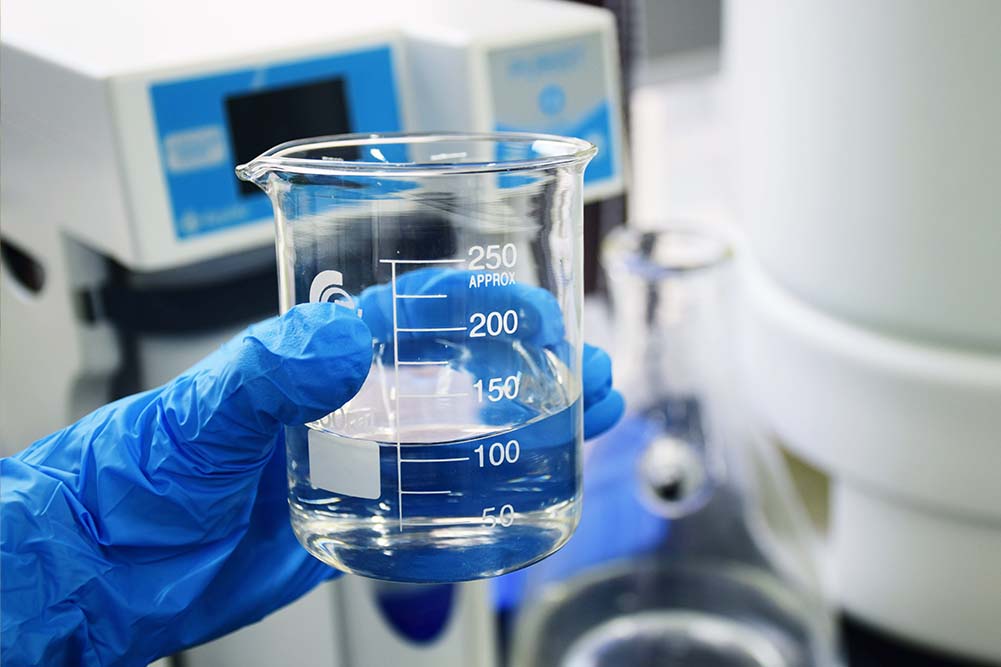Your Cart is Empty
February 10, 2022 3 min read

PFOA and PFOS, also known as “forever chemicals” because their chemical structure allows them to survive for thousands of years, threaten water safety across the United States. These chemicals are commonly used in manufacturing non-stick and water-resistant products, and once they are released into the environment, they are not easily removed.
Until recently, PFOA and PFOS were understudied and widely ignored by public health agencies. However, as new research presents itself, these chemicals are becoming more of a concern to the public eye. PFOA and PFOS are contaminating water supplies due through human intervention. When manufacturing facilities release these chemicals, intentionally or accidentally, they reside in the soil nearby. Rainfall or wind transports these chemicals into lakes, streams, or other cities, where they eventually enter groundwater supplies that supply tap water to households across the country.
These forever chemicals are linked to a variety of health effects, including testicular and kidney cancer, liver damage, cholesterol changes, reduced efficacy to vaccinations, and developmental defects to fetuses and infants. PFOA and PFOS consumption is viciously dangerous, yet public health agencies are slow to respond to the growing need to regulate their water contamination.
While pressure is being applied to the Environmental Protection Agency to regulate PFAS in drinking water, the organization still does not have the power to enforce any regulations they put in place. The EPA announced that anything over 70 parts per trillion PFAS or PFOA is considered unsafe in drinking water, but many states believe even tighter restrictions should be in place. States have begun establishing their own legal limits of how many parts per trillion of these chemicals are allowed in drinking water, but a lack of funding and water testing hinders any progress to make tap water safe to consume.
For example, New Jersey recently announced that they would tackle the water contamination problem head-on. The state set its own PFAS limit to 17 parts per trillion, substantially lower than that of the Environmental Protection Agency. After testing for PFAS in water sources across the state, they discovered that “forever chemicals exceeded maximum levels in 74 separate water systems that provide drinking water to more than half a million people across New Jersey.” About 524,000 people in New Jersey were unknowingly consuming tap water containing carcinogenic chemicals. However, removing these chemicals out of water supplies requires an expensive infrastructure change, one that the state hopes the federal government will fund through President Biden’s Environmental Justice Plan. Until then, the removal of dangerous chemicals in this state, like many others, remains static.
With confusing regulations, infrastructure changes, and developing research to navigate, it can be overwhelming for individual households to feel secure in the water they are drinking. Tap water across the United States is contaminated with these chemicals, and states are still developing plans to tackle the issue. Regardless of these shortcomings, individuals can invest in their own water filtration methods to protect themselves from PFOA and PFAS exposure. Seychelle water filters are third-party tested to remove 99.9% of PFOA and PFAS from tap water. Seychelle is here to better protect oneself from harmful chemicals in their water supply.
What are PFAS and PFOA?
PFAS, or per-and polyfluoroalkyl substances, and PFOA, or perfluoro-octanic acid, are harmful chemicals known as “forever chemicals.” They are tightly bound together in a manner that allows them to survive for thousands of years once released into the environment.
Are PFAS and PFOA harmful?
Research in these chemicals was widely ignored before recently, but now new studies are emerging that link them to kidney disease, various types of cancer, birth and developmental defects among fetuses and infants, and liver effects.
How can I protect myself and my family from PFAS?
Seychelle water filters are specifically designed to filter out harmful toxins, including PFAS and PFOA. Filtering tap water through a Seychelle product allows for peace of mind when it comes to clean, PFAS-free water.
“Drinking Water Health Advisories for PFOA and PFOS.”United States Environmental Protection Agency, 18 February 2021,https://www.epa.gov/ground-water-and-drinking-water/drinking-water-health-advisories-pfoa-and-pfos#:~:text=To%20provide%20Americans%2C%20including%20the,at%2070%20parts%20per%20trillion. Accessed 7 February 2022.
Kummer, Frank. “First-ever New Jersey data say PFAS in drinking water exceeded safe levels at water systems serving more than half a million people.”The Philadelphia Inquirer, 25 January 2022,https://www.inquirer.com/news/new-jersey/new-jersey-pfas-pfoa-pfos-forever-chemicals-20220125.html. Accessed 7 February 2022.
“PFAS Chemicals: EDCs Contaminating Our Water and Food Supply.”Endocrine Society,2021,https://www.endocrine.org/topics/edc/what-edcs-are/common-edcs/pfas. Accessed 7 February 2022.
“State-by-State Regulation of PFAS Substances in Drinking Water.”Bryan Cave Leighton Paisner, 22 January 2021,https://www.bclplaw.com/en-US/insights/state-by-state-regulation-of-pfas-substances-in-drinking-water.html. Accessed 7 February 2022.